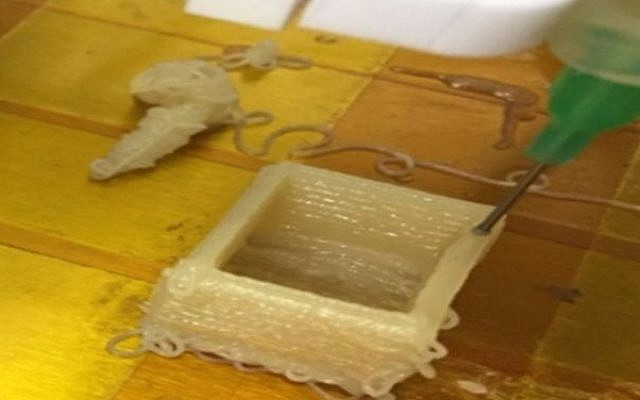UK company launches carbon nanotubes bike chain product
Muc-Off has released a specially treated carbon nanotubes Shimano Dura-Ace chain that it says offers reduced friction in race conditions and distances. The Nanotube Chain, or NTC for short, is the culmination of over 10 years’ worth of research and development into drivetrain optimisation. https://muc-off.com/blogs/news/muc-off-launches-new-nanotube-chain
Anti-counterfeiting tags from Dotz Nano are bound for the 2020 Tokyo Olympics, as part of the company’s first major order. Dotz Nano will bank $135,000 for an order of blue and green Graphene Quantum Dots (GQDs) to be used for anti-counterfeit printing dyes. Chief executive Moti Gross said the first major order to Asia would pave the way for greater recognition of the technology. “The GQDs bound for the anti-counterfeiting markets are aimed at being used in printing dyes to several companies involved in current anti-counterfeiting mechanisms, several of which, in my opinion, are aimed at the upcoming 2020 Tokyo Olympics,” he said.
Boeing invests in Nano alloys company
Boeing is investing in Gamma Alloys, a company developing aluminum alloys focused on developing advanced metal-matrix composites for use in aerospace, automotive and other industries. This investment by Boeing HorizonX Ventures, which was established earlier this year, is its first in advanced materials and machining development and applications.
“The wear, strength, durability and machining characteristics of Gamma’s materials have the opportunity to further reduce the weight of our products,” said Steve Nordlund, vice president of Boeing HorizonX. “The traction that Gamma Alloys has gained in automotive, energy and aerospace reinforces our confidence that Gamma has a unique set of materials.”
Gamma Alloys, founded in 2008, is pursuing breakthroughs in nano-reinforced aluminum alloys, where the aluminum is reinforced with microscopic particles, or nanoparticles. These alloys provide increased stiffness, improved wear resistance, and greater strength than current materials across a wider range of temperatures. Gamma Alloys is particularly focused on custom solutions where design engineers are currently limited in what they can create with traditionally available materials.
LG Chem to increase carbon nanotubes production
LG Chem Ltd., South Korea’s leading battery maker, is considering expanding its carbon nanotube (CNT) manufacturing facility due to growing demand for the ultra-light battery material. LG Chem’s CNT plant in Yeosu, South Jeolla Province began mass production upon completion in February. The company said the plant will become fully operational by late 2018 with a 400-ton annual capacity.
Nanocellulose for 3D printing of personalized food
Yissum Research Development Company of the Hebrew University of Jerusalem, the technology-transfer company of the Hebrew University, has unveiled a novel technology for the 3D printing of personalized food based on nano-cellulose, a natural, edible, calorie-free fiber. Prof. Oded Shoseyov from the Robert H. Smith Institute of Plant Sciences and Genetics in Agriculture and Prof. Ido Braslavsky, Director, Inter-Faculty Biotechnology Program and Head of B.Sc. Program at the Institute of Biochemistry, Food Science, and Nutrition, both at the Robert H. Smith Faculty of Agriculture, Food and Environment, of the Hebrew University of Jerusalem, developed a novel platform, based on nano-cellulose, that will enable the 3D printing of personalized food, according to pre-defined criteria. The novel solution can serve a variety of markets and populations, including the gluten-free market, meat substitutes, the vegetarian and vegan markets, low-calorie diets, diets for people with diabetes, for athletes and more.
The self-assembly properties of nano-cellulose fibers enable the addition and binding of different food components (proteins, carbohydrates and fat) as well as the control of food texture. Another aspect of the technology is the ability to cook, bake, fry and grill while printing at the three dimensional space. At the end of the printing process, the result is a tailored meal with special textures, enabling delivery of nutritional, tasty, low-calorie cooked meals for a unique gastronomical experience.
NREL achieves new efficiency record for quantum dot solar cell
Researchers at the U.S. Department of Energy’s National Renewable Energy Laboratory (NREL) have created a solar cell using colloidal quantum dots, which achieved 13.4% conversion efficiency.
The researchers state that their cell, made using cesium lead triodide, a material from the halide perovskite family, would best be deployed within multi-junction solar cells. “The voltage, coupled with the material’s bandgap, make them an ideal candidate for the top layer in a multijunction solar cell,” said Joseph Luther, project leader at NREL.
“Enhanced mobility CsPbI3 quantum dot arrays for record-efficiency, high-voltage photovoltaic cells,”
Apple Acquires QD Image Sensor Company
Apple has acquired quantum dot image sensor company InVisage Technologies. Founded in 2006, InVisage has raised $98 million in funding from backers including InterWest Partners, Nokia Growth Partners, Intel Capital, CRV, GGV Capital etc.
Its key product is QuantumFilm. “QuantumFilm is a photosensitive layer that relies on InVisage’s newly invented class of materials to absorb light; specifically, the new material is made up of quantum dots, nanoparticles that can be dispersed to form a grid once they are synthesized,” explained InVisage. “Just like paint, this dispersion of solid materials can be coated onto a substrate and allowed to dry.”
Bacteria-Activated Wallpaper that Generates Electricity
Courtesy Imperial College London
Researchers from Imperial College London (ICL), the University of Cambridge, and Central Saint Martins have created a wallpaper-like covering that also acts as both a solar bio-battery and solar panel—and is environmentally friendly. The team used an inkjet printer to print photosynthetic microorganisms called cyanobacteria onto conductive carbon nanotubes, all of which were then printed onto paper. The printed bacteria continue to perform photosynthesis, creating small amounts of electricity, which the researchers believe could power a small digital clock or LED lamp.





